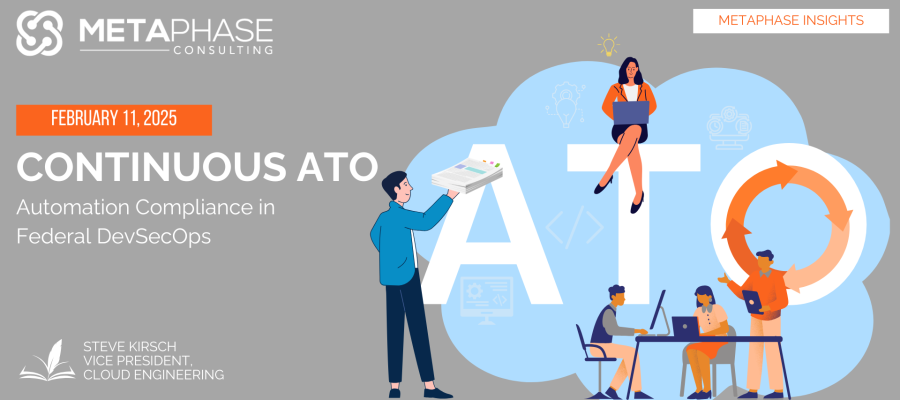
ATO approvals take months, sometimes years—but in the private sector, software updates happen daily. Federal agencies are under increasing pressure to modernize IT while maintaining the highest levels of security and compliance. Yet, the traditional Authority to Operate (ATO) process remains a major bottleneck, forcing agencies to choose between speed and security. With Continuous ATO, that tradeoff disappears.
For years, federal IT teams have worked within compliance models that prioritize documentation over automation. The traditional ATO process relies on static security assessments that are valid for months or even years, yet cyber threats evolve by the second. A system approved in January may be vulnerable by June, yet agencies must wait for the next scheduled assessment to address new risks. This reactive approach to security is no longer sustainable in a digital-first government.
Continuous ATO (cATO) reimagines compliance as an ongoing, automated process rather than a static, one-time certification. By integrating real-time security monitoring, automated compliance checks, and DevSecOps best practices, agencies can ensure systems remain secure without slowing down innovation. Instead of waiting months for approval, mission-critical updates can be deployed safely and continuously.
Take cloud-based applications as an example. In a traditional model, every change—no matter how minor—triggers a lengthy reassessment process. But with cATO, agencies implement automated security controls, ensuring every release meets compliance standards without additional manual reviews. This not only accelerates modernization efforts but also strengthens security by enabling real-time threat detection and response.
The Department of Homeland Security (DHS) and the Department of Defense (DoD) have already begun implementing cATO models, proving that automation can work at scale in high-security environments. The DoD’s Platform One framework, for instance, integrates continuous security scanning, automated testing, and Zero Trust principles to maintain compliance at speed. These initiatives provide a roadmap for other agencies looking to transition from outdated ATO models.
To make cATO a reality, agencies need cloud-native architectures, automated security testing, and a Zero Trust mindset. Legacy compliance models that rely on periodic reviews and static documentation are no longer sufficient in a world where cyber threats evolve daily. By shifting to an automated, real-time approach, agencies can meet mission demands faster, more securely, and with greater confidence.
The shift to cATO isn’t just a technical change—it’s a cultural one. Agencies that embrace it will unlock faster development cycles, stronger security, and greater mission agility, setting the standard for the next generation of government IT.
MetaPhase works at the intersection of business-to-IT partnerships—creating, deploying, and supporting practical solutions that serve as a force multiplier for government.

